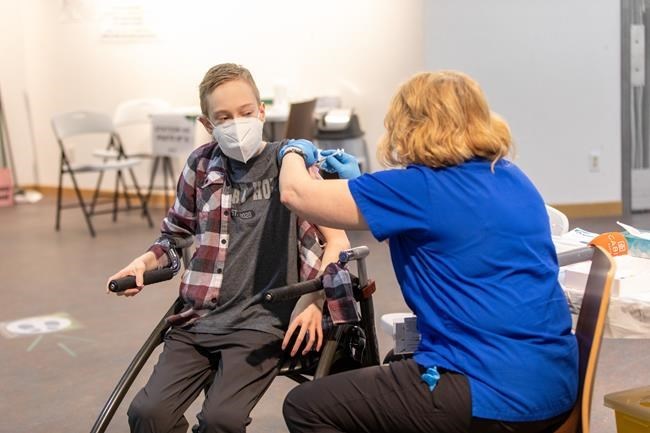YELLOWKNIFE — The Northwest Territories was among the first jurisdictions in Canada to offer the COVID-19 vaccine to all adult residents, but it's now lagging behind in expanding a rollout of fourth doses.
The territory, along with Nunavut and Yukon, received enough of Moderna's COVID-19 vaccine to administer a first dose to 75 per cent of residents ages 18 years and older in the first three months of 2021, ahead of the provinces.
More than a year later, the N.W.T. is the only territory, along with a handful of provinces, not to expand access of a fourth dose, or a second booster to all adults. Those 50 and older and immunocompromised people who are at least 12 years old can currently get a fourth shot.
British Columbia, Manitoba, Nova Scotia, and Newfoundland and Labrador have also yet to expand fourth dose eligibility to those aged 18 and older.
The territorial government said in an email that it's focused on preventing severe outcomes from COVID-19. This week, it rolled out the Moderna Spikevax COVID-19 vaccine for children six months to five years.
The government said it has held off from offering wider access to a fourth dose based on national recommendations and data that shows people under 50 are at low risk of severe illness from the Omicron variant.
“The vaccines that are available now are increasingly not as effective in preventing infection from Omicron and its subvariants,” said Jeremy Gibson Bird, a spokesperson for the Department of Health and Social Services.Â
“Given the expected arrival of a fall vaccine and the predicted rise in cases of COVID-19 in the fall and winter months, the (chief public health officer) feels it is preferable to wait until an updated Omicron-specific vaccine becomes available to offer further doses to persons aged 18 (and older).”Â
In its recent guidance, the National Advisory Committee stressed the importance of a fall booster program, particularly for those at high risk for COVID-19, but generally recommended a six month interval between the third and fourth dose. It has been nine months since the N.W.T. began offering the third dose to adults.
Angela Rasmussen, a virologist at the Vaccine and Infectious Disease Organization at the University of Saskatchewan, said the benefit of a fourth dose is "marginal" for people who are not at high risk.
She said there's not a lot of evidence on what the interval should be between the third and fourth dose, as rollout has varied worldwide. She said some research has shown a longer period between the first and second dose produced a stronger immune response.Â
"I do think it's possible that a longer interval may actually have more benefits than a shorter one, but there's really no data that can indicate that very clearly."
Recent studies suggest the effectiveness of a third dose of an mRNA vaccine against COVID-19 begins to wane after three to four months.
Craig Jenne, an associate professor in microbiology, immunology and infectious diseases at the University of Calgary, said a wider gap between boosters in the N.W.T. could reduce general public immunity.
"This could create problems down the road," he said.
Jenne said evidence shows that despite waning immunity a third dose continues to protect people against severe outcomes from COVID-19.
"That's the most important metric at the moment. If there are breakthrough infections, but they don't lead to severe disease, that's less of a problem than if we're seeing people developing severe disease again."
Jenne said a larger issue than rollout of a fourth dose is that more than half of Canadians have yet to receive their first booster. Federal data indicates just over 49 per cent of Canadians and nearly 42 per cent of those in the N.W.T. had received a third dose as of July 17.
"We really need to encourage people who are eligible to seek out booster shots, particularly if they live in rural or remote Canada," he said, adding the reduction of other public health measures has increased the importance of vaccination.Â
This report by The Canadian Press was first published July 28, 2022.Â
___
This story was produced with the financial assistance of the Meta and Canadian Press News Fellowship.
Emily Blake, The Canadian Press




